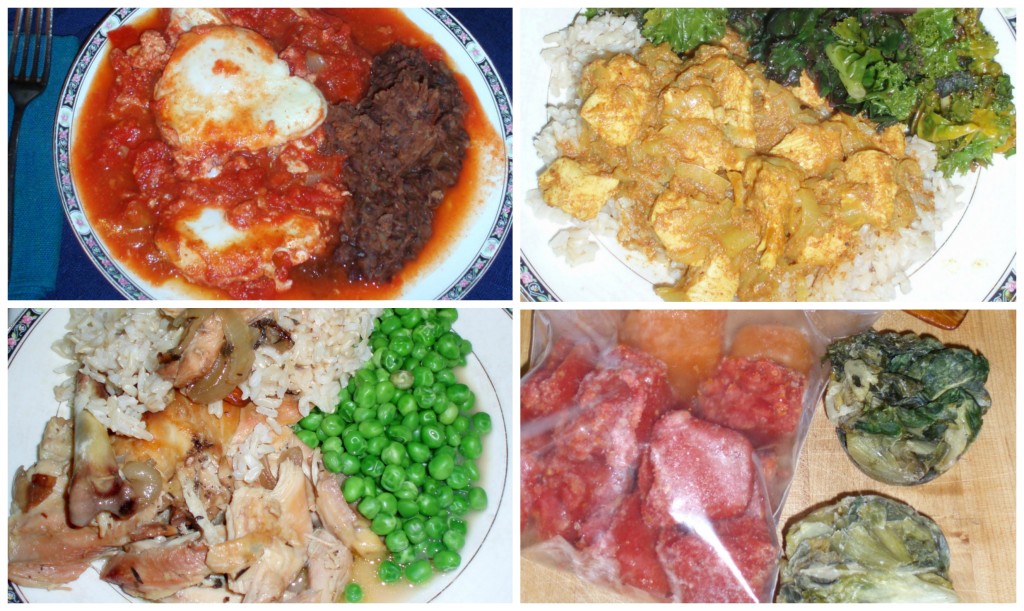Transition from Takeout – Introduction
 I’m starting a new, rather sporadic, series of posts on this blog – Transition From Takeout. (TFT will be the tag…) I’m specifically thinking of suggestions for people who are currently, for any of many reasons, using more prepared food than they would really like to, but are having trouble moving away from it.
I’m starting a new, rather sporadic, series of posts on this blog – Transition From Takeout. (TFT will be the tag…) I’m specifically thinking of suggestions for people who are currently, for any of many reasons, using more prepared food than they would really like to, but are having trouble moving away from it.
Now – I want to be very clear, here – this is not an All Takeout is Evil! post. (I’m using “takeout” here for all prepared food, for the sake of convenience – insert frozen dinners, the corner diner, whatever form you eat.) Through the entire history of humanity, most people have sat down to meals prepared by others – though the other might be a wife or mother, a servant, the cook in the house in which the diner was a different servant, or the owner of the boarding house. Or, of course, the guy flipping burgers down the block… or his antecedents – the pie man, the noodle lady, the felafel guy, the man selling sticks of satay. Working all day at an unrelated job, and then coming home and preparing dinner is complicated – and most people have not been expected to do it.
That said – now, few of us have full time servants, and fewer of us live in boarding houses (which, by definition, served food – if it didn’t, it was just a rooming house…) If we are single adults, we are less likely to live with our parents, or in the home of a married sibling. And fewer families than used to include a full time homemaker. (My great grandmother, the farm wife, cooked for herself, her husband, eight children, and a varying number of hired hands… full time, indeed. She grew and canned her vegetables, raised and butchered her chickens, churned her butter, and didn’t do much that wasn’t food preparation – but everyone else in the household came in from the fields and sat down to table. It was all about division of labor.)
And for some people, now, ordering out works. If you can get a variety of nutritious foods, if you don’t need to be concerned about salt and/or fat, if you can get food that suits your dietary needs and preferences, and if finances are not a limiting factor, it can work. It can even work well.
But there are many “if”s in that sentence… I know that many people, while happy to eat out sometimes, find themselves doing so more often than they really want to. But many things can make it hard to change.
I did it a lot, for years, when I had a full time job and was working in theatre in the evening. I didn’t really have a good place to eat lunch at work, so went out for lunch, and then was at rehearsals a couple of nights a week. I’d buy fresh food and it would wither away… I ate a lot of takeout Chinese food, so at least I was getting vegetables, but… it was not ideal.
I’ve asked on Google+ and Facebook, and among my own friends – if someone does want to change, what are the issues that make it hard to cook? People have told me about crazy schedules, with both lunch and dinner away from home. (Carry two meals? And when, exactly, do you cook them?) Lack of reliable schedules, because of demanding jobs, or merely demanding employers – people who never know when they will really get home from work. Situations where the cook is the last person home – so everyone else is hungry before the cook walks in the door. Families in which people have different – sometime conflicting – food requirements, because of allergy, intolerance, medical requirements. There can also be strong preferences – one is a vegetarian, and another refuses to eat a meal without meat. Three love fish – and one can’t stand it. One is a super taster, and the others adore all green vegetables.
You also need, basically, to know how to cook. People often express dismay about young people who can’t cook, and sometimes that is true, but when I was doing food sampling I found it a more widespread problem among elderly widowers – they never expected to have to cook, and the time after a spouse’s death really isn’t a good time to learn. But both nutrition and finances are frequently an issue for them.
The problem that I have been working around for a few years, now, is, as I’ve said, migraine. Attacks are completely unpredictable. I need to always have something around that can become dinner quickly with little or no effort – or thought – on my part. I think, and hope, that some of the ways I have found to deal with that will help others.
Do you have thoughts about this? Questions? Issues I haven’t mentioned? Comment, or email me – anne@inhabitedkitchen.com – with any ideas or questions.
The key, here, is going to be Transition. Not changing everything immediately, but finding ways to ease into change – small changes that can last, instead of radical feel good changes that may not.
And first – in that spirit – get some disposable plates and flatware… you don’t want to start cooking and washing dishes at the same time… keep it easy. Also make sure you have some freezer containers – single serving size – and freezer zipper bags. Yes, the freezer is our friend.
I hope to hear from you!

Yes, this is definitely an issue for me. At various points in my life, I have been more prepared than I currently am for the unpredictable nature of some medical issues that I struggle with. The freezer is definitely my friend in this regard, but I need to get back to making the investment in the first place, into my freezer “bank”.
Yes.
The usual approach is to do a mass cooking to Fill the Freezer – Once a Month Cooking being the most extreme version – but I can’t *start* a project like that, as I never know if I’ll be able to finish it.
I like using the slow cooker, because it is easy to make more than one meals worth (even for a family larger than our 2) and because almost all the work is up front. If I’m not up to finishing, I can just point Rich to it and say “Put it in containers in the fridge – I’ll deal with it later..” (That, of course, requires that at least one other person is an adult, or at least a teenager – I wouldn’t do that to a small child.) And most slow cooked recipes reheat very well – stew, chili, pot roast… If I’m cooking it at all, I might as well cook enough for another meal or two.
Otherwise – what I do most of the time is very different – I’ll be talking about that next week!